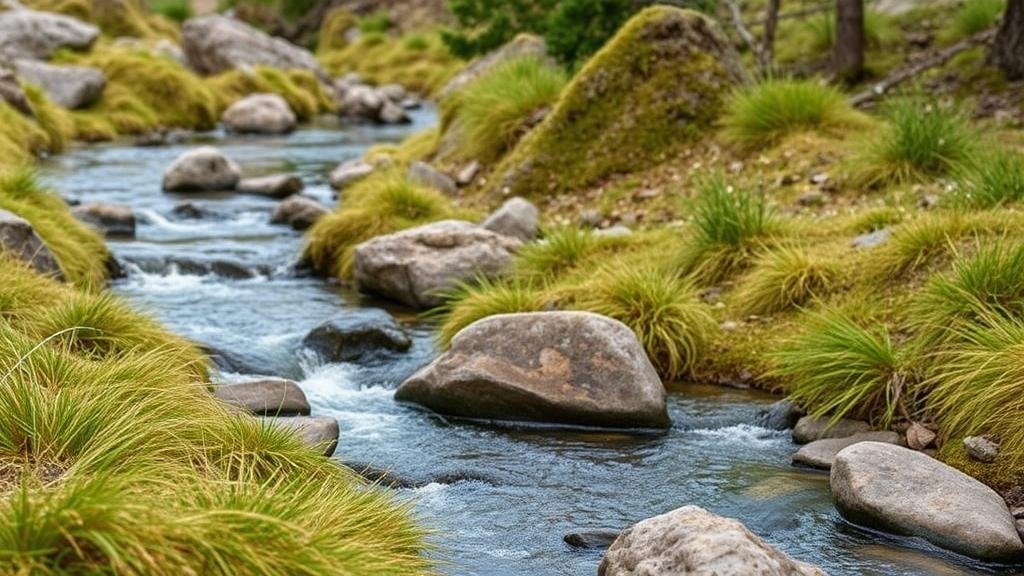The Role of Secondary Deposits in Gold-Bearing Streams
The Role of Secondary Deposits in Gold-Bearing Streams
Gold mining is a fundamental aspect of the mining industry, with various processes utilized to extract this precious metal. One of the essential geologic phenomena affecting gold deposits is the presence of secondary deposits in gold-bearing streams. This article explores the formation, characteristics, and significance of secondary deposits, providing key insights into their role in gold recovery.
Understanding Secondary Deposits
Secondary deposits refer to the accumulation of minerals that have been transported from their primary sources to new locations, often through the processes of weathering and erosion. In the context of gold-bearing streams, secondary deposits are a critical source of placer gold. As primary gold deposits erode over time, gold particles are liberated and carried downstream by the movement of water.
Formation of Secondary Deposits
The formation of secondary deposits involves several geological processes, including:
- Erosion: Weathering breaks down rocks containing gold, releasing finer particles into water systems.
- Transport: Streams and rivers transport these particles downstream through the action of water, typically during high-flow conditions like spring melts or heavy rains.
- Deposition: As water slows down, particularly in lower gradient areas, the gold particles settle to the bottom, accumulating in certain pockets known as placer deposits.
An example of this can be seen in the Klondike River, which became famous during the Gold Rush. The river’s bends and slower-moving sections collected large amounts of gold that had eroded from the surrounding hills. Today, places like the Klondike continue to see active mining based on these secondary deposits.
Characteristics of Secondary Deposits
Secondary deposits exhibit unique characteristics that differentiate them from primary deposits:
- Grain Size: Typically, gold in secondary deposits is smaller and more rounded due to the transportation process, which polishes the metal.
- Distribution: The distribution of secondary deposits is often irregular, as water flows create natural variations, concentrating gold in areas such as riffles, bends, and behind large stones.
Field studies have demonstrated that the most productive areas within a stream are often those where turbulence promotes gold deposition, such as behind boulders or submerged vegetation.
Significance of Secondary Deposits
Secondary deposits are not only vital for gold recovery but also have implications for economic and environmental perspectives:
- Economic Impact: Secondary deposits can constitute a significant portion of a regions gold output, making them economically valuable for mining operations.
- Environmental Considerations: The methods employed to extract gold from secondary deposits can lead to environmental degradation, necessitating responsible mining practices.
For example, modern companies utilize methods such as sluicing and panning, which can minimize impacts if performed sustainably. Regulations often govern these operations to protect stream ecosystems while allowing for mineral extraction.
Real-World Applications
Secondary deposits contribute to the livelihoods of many communities globally. For example, artisanal mining techniques employed in places like Ghana often rely on these deposits. Local miners extract gold using hand tools, which, while less environmentally impactful than large-scale operations, still require oversight to ensure community safety and environmental sustainability.
Actionable Takeaways
Understanding the role of secondary deposits in gold-bearing streams is essential for anyone involved in geology, mining, or environmental science. Here are some actionable takeaways:
- Recognize the importance of geological processes like erosion and transport in gold formation.
- Consider the economic and environmental implications of mining secondary deposits.
- Advocate for sustainable mining practices that minimize environmental impact while maximizing economic benefits.
In summary, secondary deposits play a crucial role in the accessibility of gold in stream environments, highlighting the complex interplay between geological processes and economic activity. Awareness and responsible management of these deposits can help optimize gold recovery while safeguarding natural ecosystems.



